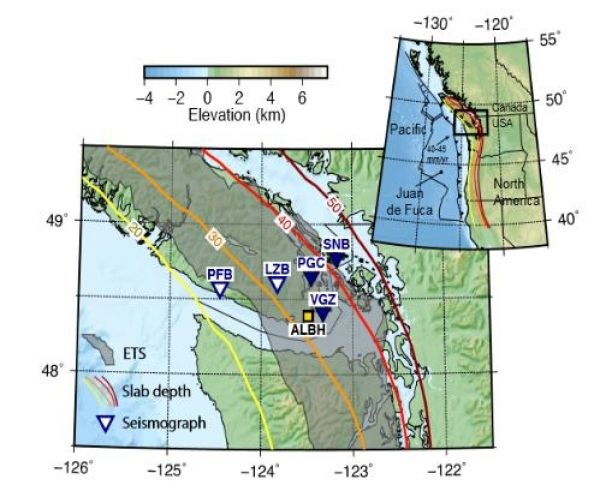A team of researchers at the University of Ottawa has made an important breakthrough that will help better understand the origin and behavior of slow earthquakes, a new type of earthquake discovered by scientists nearly 20 years ago.
These earthquakes produce movement so slow – a single event can last for days, even months – that they are virtually imperceptible. Less fearsome and devastating than regular earthquakes, they do not trigger seismic waves or tsunamis. They occur in regions where a tectonic plate slides underneath another one, called ‘’subduction zone faults’’, adjacent but deeper to where regular earthquakes occur. They also behave very differently than their regular counterparts. But how? And more importantly: why?
Pascal Audet, Associate Professor in the Department of Earth and Environmental Sciences at uOttawa, along with his seismology research group (Jeremy Gosselin, Clément Estève, Morgan McLellan, Stephen G. Mosher and former uOttawa postdoctoral student Andrew J. Schaeffer), were able to find answers to these questions.
“Our work presents unprecedented evidence that these slow earthquakes are related to dynamic fluid processes at the boundary between tectonic plates,” said first author and uOttawa PhD student, Jeremy Gosselin. “These slow earthquakes are quite complex, and many theoretical models of slow earthquakes require the pressure of these fluids to fluctuate during an earthquake cycle.”
Read more at University of Ottawa
Image: A map of Vancouver Island showing the locations of seismic instruments considered by the research group. The grey shaded region delineates where slow earthquakes occur. (Credit: University of Ottawa)


